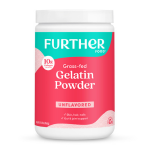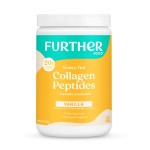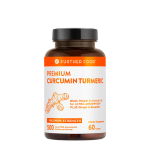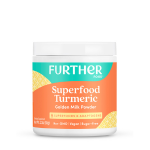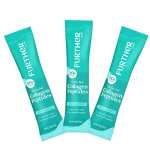Got High Blood Pressure? 10 Alternatives to Medication You Should Try First

If a visit to your primary care doctor resulted in news that your blood pressure is high, it’s not something to be ignored. While stress and other circumstances might temporarily affect your blood pressure, consistently elevated numbers need to be addressed. Hypertension puts a lot of extra pressure on your arteries, which can eventually lead to damaged blood vessels, an aneurysm or even a heart attack.
Eating a diet high in salt is one of the biggest contributors to high blood pressure. By limiting sodium intake and making some lifestyle changes, you can help to control your numbers and improve your overall health.
First, it’s important to understand the numbers. A blood pressure test measures the pressure exerted against the walls of your arteries when your heart is beating (systolic) and when your heart is at rest between beats (diastolic). Blood pressure is read as systolic/diastolic in millimeters (mm) of mercury (Hg). Here’s a rundown on the different blood pressure classifications:
Normal blood pressure: 120/80 and under
Pre-hypertension: 120-139/ 80-89
Hypertension: 140-159/ 90-99
If you need to lower your blood pressure, try following these 10 tips:
1. Cook without salt. Instead of salt, experiment with different herbs and spices to see what works for you. Lemon or lime juice, vinegar and pepper work well. And basil, oregano or garlic can up the ante on any Italian dish. Ginger, cumin and sage are great additions to stir fries or vegetables, while turmeric and coriander can boost flavor in curries. If you like spicy food, add cracked red pepper or chopped jalapeño to your dishes. Try Mrs. Dash products, which are dried blends of herbs and spices without any salt.
2. Take the salt shaker off the table. Out of sight, out of mind. You will not be tempted to salt foods if it is not on the table. And remember that all salts have a similar sodium content. So sea salt, Himalayan salt, black salt, kosher salt, table salt should all be used sparingly if you are trying to lower your blood pressure.
3. Read nutrition labels. Be a smart consumer and read how much sodium is in the foods that you are buying. When looking at a nutrition label, a good rule of thumb is to choose foods with less than 150 mg of sodium per serving. Make sure you check how many servings are in the container or box. Sometimes, the serving size is really small (5 chips or 1/4 can of beans), which makes it appear to be low-sodium. Know what’s in your food!
4. Cut out processed foods. Instant noodles, canned soups, beans or vegetables, frozen meals, spaghetti sauce in a jar, bottled salad dressing, chips, crackers, and cookies all contain a lot of sodium. Homemade and fresh options are your best choices. (For a quick homemade salad dressing, mix 1/3 cup olive oil, 3 tablespoons vinegar, pepper and herbs). Make huge batches of spaghetti sauce and soups to freeze for later.
5. Look for low-sodium options. You may be able to find a low-sodium version of a food that you love. For example, brands like Triscuit and Ritz make “Hint of Salt” crackers, and you can buy tortilla chips and pretzels without salt, or nuts that are dry roasted and unsalted. Some canned goods marked as “No Salt Added” can also be a good choice.
6. Toss the processed meats. Meats such as hot dogs, sausage, deli meat, and bacon are high in sodium. There are no low-sodium versions of hot dogs or sausage (unless you make your own!) and turkey bacon has the same (or higher) sodium content as pork bacon. Ask at the deli counter for any low-sodium meat options such as the Boar’s Head brand. Choose fresh meats and seafood more often.
7. Be wary of sports drinks. Beverages like Gatorade and Powerade have a high salt content, because sodium is considered an electrolyte. These drinks are really only appropriate if you are performing a high-intensity exercise for greater than one hour. Water is your best hydration choice every day and for most workouts.
8. Take control when eating out. Most restaurant options are high in salt. Avoid the bread or chip basket, as this adds a lot of sodium. And don’t be afraid to ask that your food be made without salt, and for sauces and dressings on the side. If you are curious about the sodium content of your meal, all chain restaurants provide nutritional information online. You might be surprised at how much sodium is in your usual go-to choice. Your best bet is to eat at home the majority of the time.
9. Up your vegetable and fruit intake. Fruit and veggies are high in potassium, which can counter the effects of sodium. They’re also chock-full of fiber, vitamins and minerals. Aim to eat a wide variety of fresh produce on a regular basis.
10. Make some changes to your lifestyle. You can also reduce your blood pressure by maintaining a healthy weight and exercising at least 30 minutes per day. Quit smoking! And try to find ways to manage stress, whether that be through meditation, spending time with loved ones or another feel-good activity.
Keep in mind that when you start making changes to your diet and lifestyle, it takes time to get adjusted. Allow your taste buds the time they need to get used to new flavors, and don’t be afraid to experiment in the kitchen! If you are new to exercise, start with a 10-minute walk, and then slowly add more time. Do something each day that relaxes you, like reading a book or making a list of things you are grateful for. Talk to your doctor about bigger hurdles, like quitting smoking.
Just like with anything, it’s all about moderation. It’s not that you can never have bacon again — just don’t eat it every day. Change can be difficult, but starting with small steps will lead to big changes before you know it.
Want more? You might also like:
Americans Are Consuming Way Too Much of This Ingredient…Are You?
Living with PCOS or Diabetes II? 12 Habits You Should Live By
9 Ridiculously Yummy Heart-Healthy Dishes You Need to Try
What You Really Need to Look for on Your Peanut Butter Label…
I Am Not Invisible, I Have a Chronic Illness
Note: PLEASE consult with your doctor before making any changes to your diet or medications. The material on this site is provided for educational purposes only, and is not to be used for medical advice, diagnosis or treatment.










